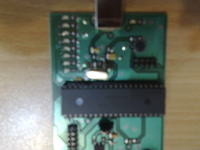behranghm
Member level 1
pic18f4550 configuration bits
i am using pic18F4550 in a fairly simple circuit for the first time and i am having severe problems with it's oscillator in every mode. i have tried a 20 Mhz crystal with a whole range of capacitors with a variety of fuse programming modes for the oscillator. Still the oscillator isn’t working or is not stable. Any clue? Any help?
i am using pic18F4550 in a fairly simple circuit for the first time and i am having severe problems with it's oscillator in every mode. i have tried a 20 Mhz crystal with a whole range of capacitors with a variety of fuse programming modes for the oscillator. Still the oscillator isn’t working or is not stable. Any clue? Any help?
